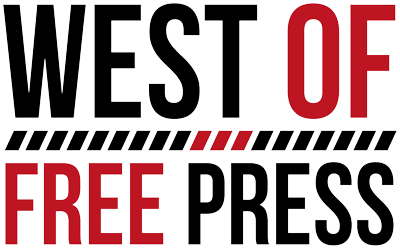Just riding a bicycle from the neighborhood right behind the West Ashley Mellow Mushroom to the base of the Legare Bridge to take the front-page picture for this story is a downright nightmare.
Even at 9:30 a.m. on a Thursday, well after standard rush hours have ended. Even when using the bike lane on St. Andrews Boulevard. And even for a former amateur bicycle racer who spent close to 60,000 miles on a bike over a five-year period in the 1990s.
Trucks are big. Cars are close. The speeds and the pacing of vehicles passing by are frightening. Navigating down the sidewalk across Highway 17 from the Waffle House is tough, because overgrown bushes and oncoming cyclists force riders into oncoming traffic.
That’s all before cutting through the circular Holiday Inn parking lot and then risking life and limb to run across the other side of 17 to snap the photo.
And here’s the ironic thing from Ryan Cockrell’s perspective: it’s no better for the people in cars.
“The bottom line is this: it’s never going to get better. You will never, ever, get where you want to go in a car, period,” faster and happier, because of a growing population, he said.
“End of story: we’re not going to make it better (for car traffic), so why not try to make it more fun to get around?” Cockrell demands, advocating for completion of the proposed bike and pedestrian lane across the bridge.
Cockrell, 38, is a James Island native and filmmaker who now lives downtown, where he works with Lunch and Recess, a visual media firm that makes short films, as well as commercials for national companies like Johnston & Murphy shoes and local spots for Trident Technical College.
He is also an avid bike-rider, skateboarder, and believer that walking is superior to driving. As such, he’s put together a passion project entitled Backpedal, which he pitches as a documentary looking into ways to lead the Holy City away from being so auto-centric.
The film is finished, and is halfway through a run on Kickstarter to raise $12,000 to score the movie, and to pay entry fees for movie festivals. The film interviews everyone from outspoken bridge critic Mark Knapp to former Obama transportation appointees.
While the documentary deals with more than just the bike lane, Cockrell says its completion would transform West Ashley all the way up to Citadel Mall. With it in place, he argues, neighborhoods on this side of the river would soon become de facto downtown neighborhoods due to connectivity.
Neighborhoods south of Wappoo Road, he said, could be closer as the crow flies and as the bike rolls to big employers like MUSC, than portions of Wagener Terrace, where he lives.
“The only problem with riding a bike or commuting on foot from Citadel Mall to King Street is the way it links up over the Ashley River … You can ride the Greenway completely protected and beautiful, with access to businesses and restaurants and services along the way. And, you can have a nice time, and not just sit in crazy traffic.”
“But you’ve got to risk your whole life until you get to South Windermere and Folly Road, where the Greenway gets all scary.”
Additionally, Cockrell argues that there’s something undemocratic about a “cars-only” bridge that has no pathway for those on foot, bike, or board.
Cockrell finds it ridiculous that the “best city in America,” according to Conde Nast and many locals, would settle for such a situation.
Charleston County is still putting together a report on the proposed bike lane’s one-month trial run, according to county spokesman Shawn Smetana.
The trial didn’t allow for bikes or others to use the lane; just blocked it to test for its affect on car traffic.
Howls of complaints have been heard from James and Johns islanders, who saw their commute times climb along Folly Road during the test.
But City Councilman Peter Shahid, whose district starts at Avondale, said he received no complaints whatsoever from his constituents.
Shahid says he will withhold his vote on the bike lane until the county completes its report. “From there, we will figure this out,” says Shahid, whose predecessor voted against the lane.
“It may come out that there is no real delay; or that there is a 30-minute delay. At that point we have to decide what is the cut-off point,” says Shahid.
Shahid said that knocking on doors in last year’s campaign showed him clearly that the number of young people who’ve moved into his district has “exploded.”
And with them has come a heightened interest in alternate and healthier means of commuting.
(843) 766-WEST (9378)
publisher@westof.net







